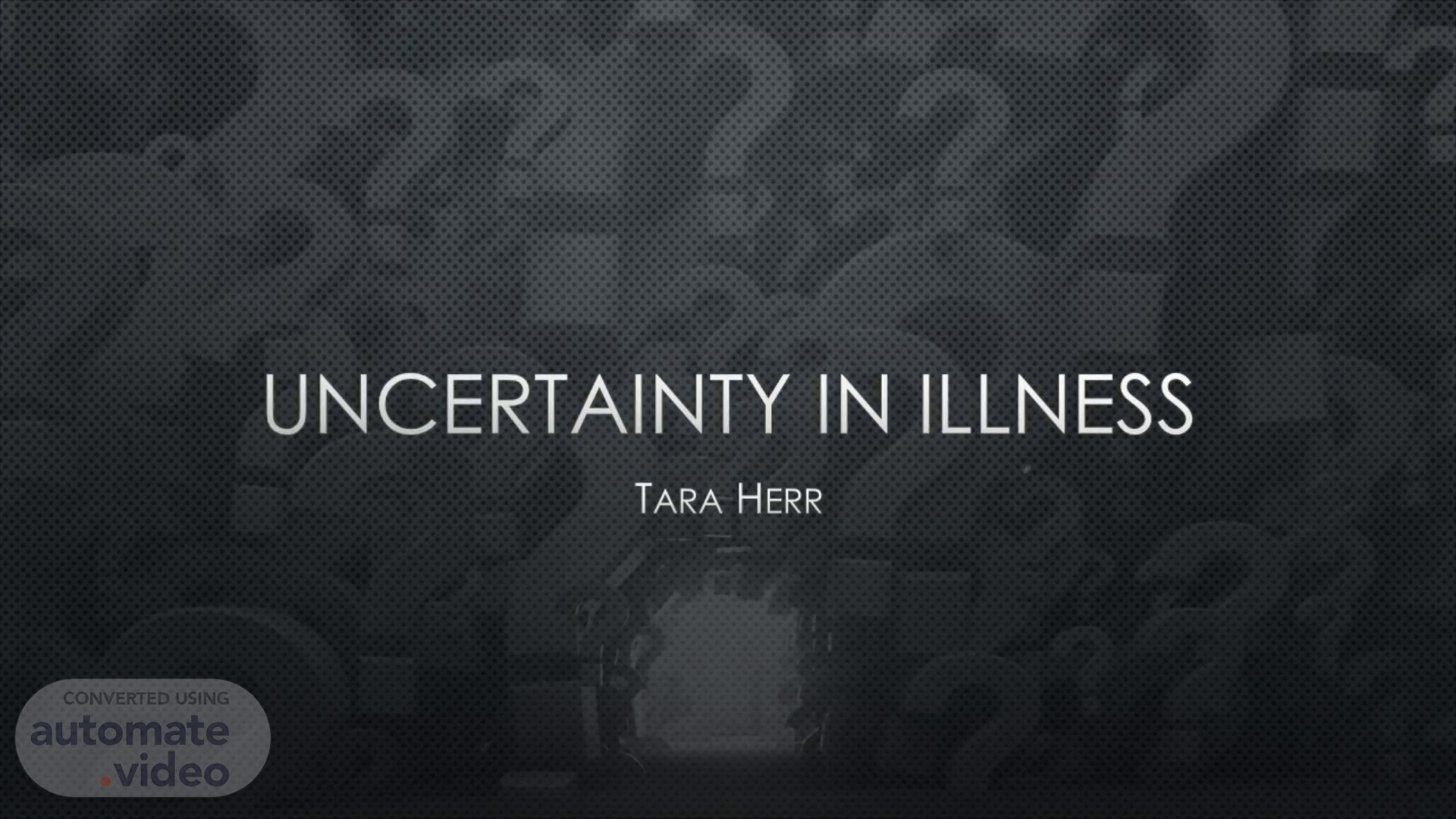
Uncertainty in Illness
Scene 1 (0s)
Uncertainty in Illness. Tara Herr. A grey room full of question marks with an opening going out.
Scene 2 (17s)
Objectives. Define the concept of uncertainty in illness Describe attributes of above concept Explain consequences due to concept.
Scene 3 (38s)
definition. "The inability to determine the meaning of illness related events" Can be positive or negative.
Scene 4 (1m 30s)
attributes/description. PROBABILITY Likelihood of something happening Unpredictable TEMPORALITY Duration, pace, frequency Inability to plan ahead PERCEPTION One's understanding Initial step in uncertainty.
Scene 5 (3m 40s)
antecedents/factors. Stimuli frame Symptom pattern, event familiarity, event congruency Cognitive capacities Interpretation Structure providers Sources of information Reduces uncertainty.
Scene 6 (4m 34s)
Consequences/outcomes. Emotional distress, anxiety, depression Interventions can promote positive outcomes Personal factors.
Scene 7 (5m 37s)
Patient/partner dyad in uncertainty. Effects both patient and partner More responsibilities How can they cope?.
Scene 8 (6m 19s)
Application to professional nursing #1. Barriers to care in pediatric cancer: The role of illness uncertainty in relation to parent psychological distress..
Scene 9 (7m 21s)
Application to professional nursing #2. “The future is probably now”: Understanding of illness, uncertainty and end‐of‐life discussions in older adults with heart failure and family caregivers..
Scene 10 (8m 21s)
Application to professional nursing #3. Further explorations of illness uncertainty: Carers’ experiences of Parkinson’s disease..
Scene 11 (9m 27s)
Application to my practice. Emergency department = uncertainty Education leads to reduced uncertainty.
Scene 12 (10m 11s)
Future implications. Further research = more effective interventions.
Scene 13 (10m 38s)
summary. Three main attributes Antecedents have ability to affect patient outcome and perception Consequences associated with negative outcomes Intervention improves quality of life.
Scene 14 (11m 19s)
references. McCormick, K. M. (2002). A concept analysis of uncertainty in illness. Journal of Nursing Scholarship, 34 (2), 127-131. https://doi.org/10.1891/0889-7182.9.1.3 Zhang, Y. (2017). Uncertainty in illness: Theory review, application, and extension. Oncology Nursing Forum, 44 (6), 645–649. https://doi.org/10.1188/17.ONF.645-649 Perez, M. N., Traino, K. A., Bakula, D. M., Sharkey, C. M., Espeleta, H. C., Delozier, A. M., Mayes, S., McNall, R., Chaney, J. M., & Mullins, L. L. (2020). Barriers to care in pediatric cancer: The role of illness uncertainty in relation to parent psychological distress. Psycho-Oncology , 29 (2), 304–310. https://doi.org/10.1002/pon.5248 Im , J., Mak, S., Upshur, R., Steinberg, L., & Kuluski , K. (2019). “The future is probably now”: Understanding of illness, uncertainty and end‐of‐life discussions in older adults with heart failure and family caregivers. Health Expectations , 22 (6), 1331–1340. https://doi.org/10.1111/hex.12980 Hurt, C. S., Cleanthous , S., & Newman, S. P. (2017). Further explorations of illness uncertainty: Carers’ experiences of Parkinson’s disease. Psychology & Health , 32 (5), 549–566. https://doi.org/10.1080/08870446.2017.1283041.